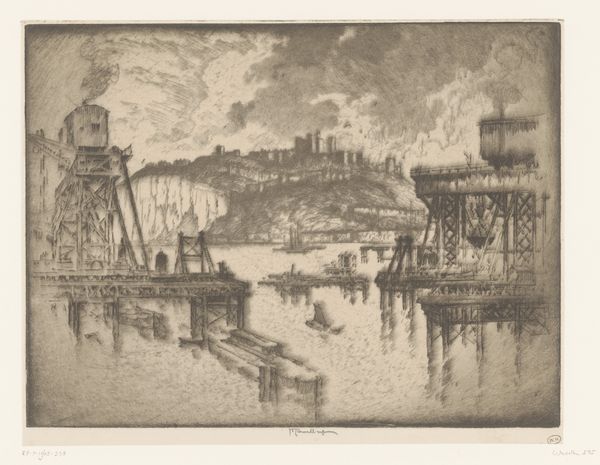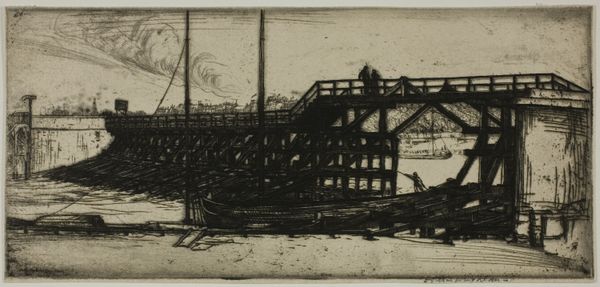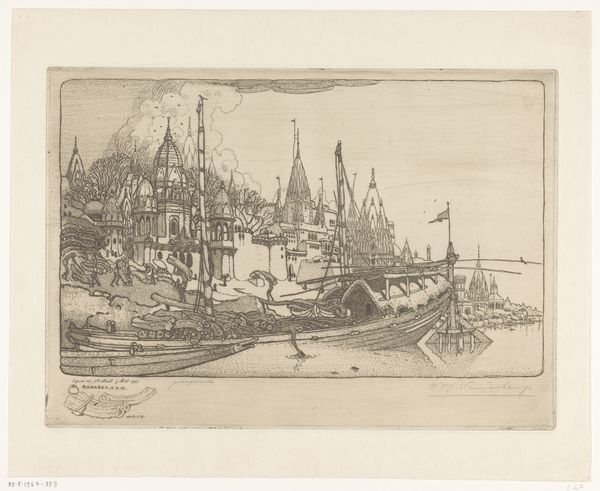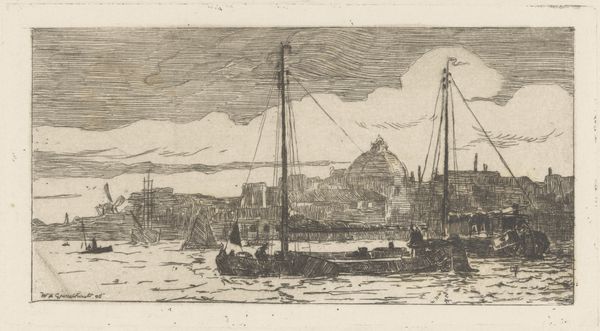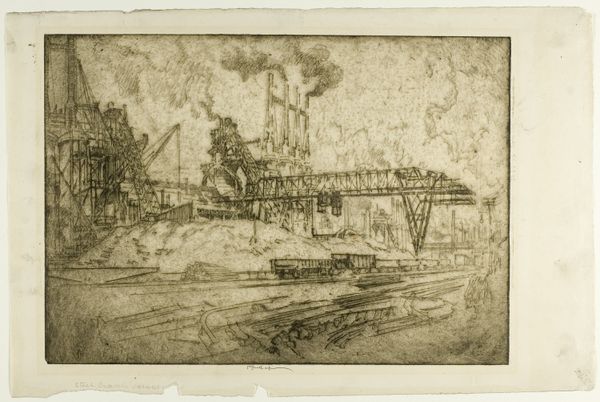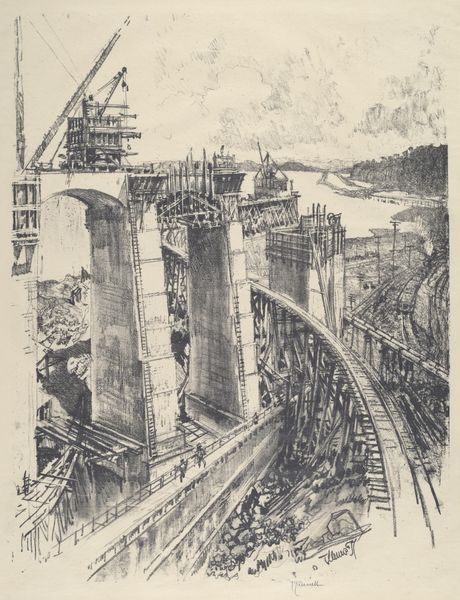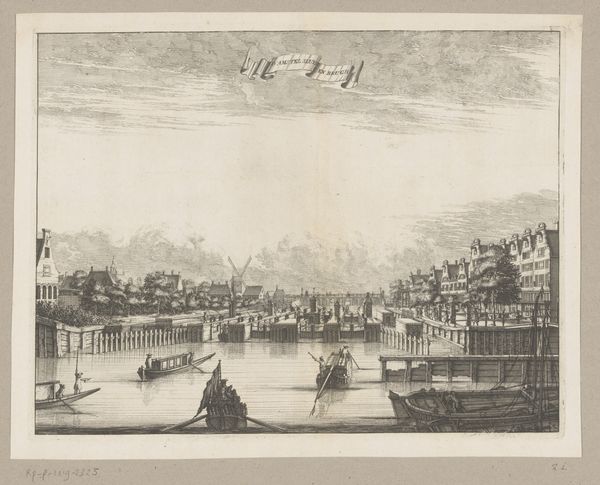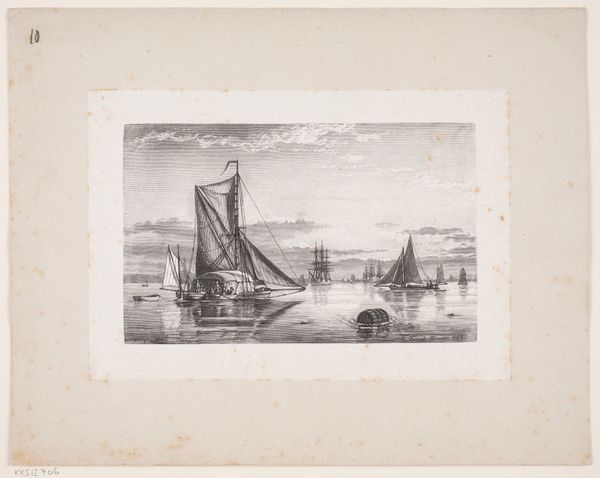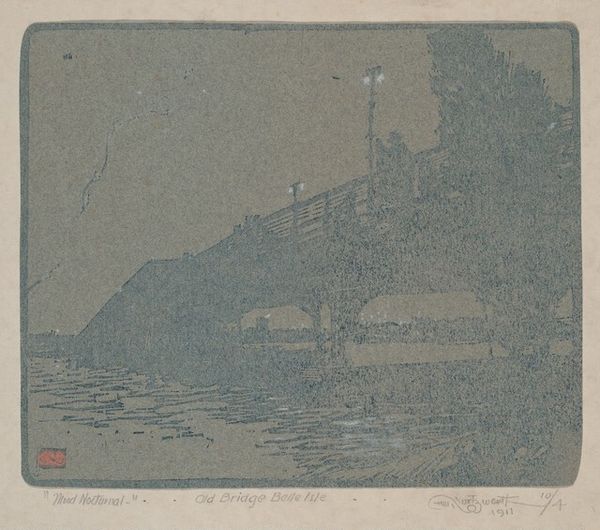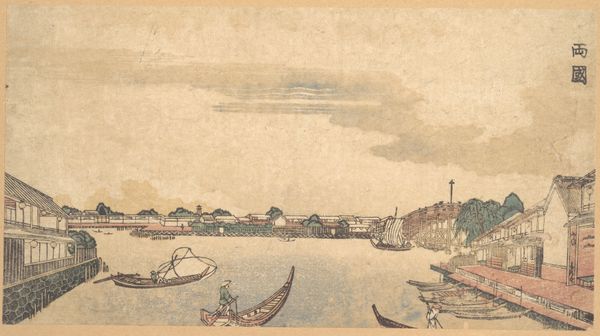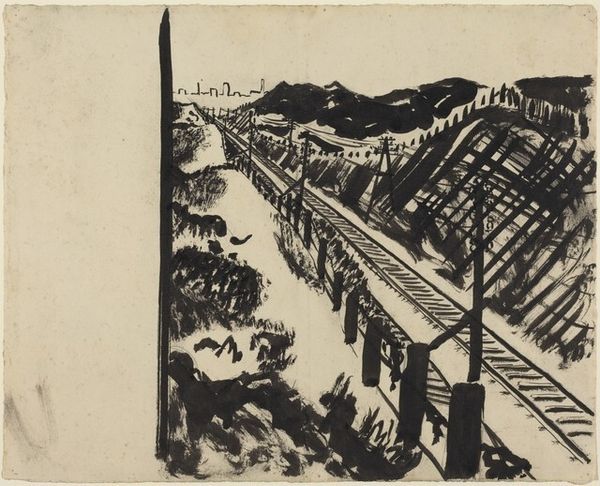
Enjoying the Evening Cool at Ryōgoku Bridge c. 1844 - 1845
0:00
0:00
Dimensions: 9 × 13 3/4 in. (22.8 × 34.9 cm) (image, horizontal ōban)
Copyright: Public Domain
Curator: Hiroshige’s woodblock print, "Enjoying the Evening Cool at Ryōgoku Bridge," created around 1844-1845, presents a bustling scene from Edo-period Japan, now held at the Minneapolis Institute of Art. The bridge itself dominates the composition, stretching across the Sumida River. Editor: My first impression is one of skillful depth, a masterful orchestration of perspective, isn't it? The bridge seems to draw you in, leading your eye into the cityscape beyond. There's a definite energy in its depiction of public space. Curator: Precisely. That bridge acts as more than just a physical structure; it’s a crucial meeting place, both literally and metaphorically linking different strata of society. Notice how the commoners on the boats and the figures on the bridge are captured, representing various roles in the city. Their interactions and shared space provide a fascinating lens through which to consider Edo-period social dynamics. Editor: Absolutely. And consider the materials: woodblocks carved meticulously, printed with ink – a labor-intensive process revealing a significant investment of skill. The color application too— the gradations of the blue in the river, for example—show how carefully the printing was considered and executed, don't you agree? Curator: I do, and that focus brings to mind how the artist uses distinct compositional choices to construct a larger narrative about societal pleasures and accessibility to leisure time. This connects with popular cultural perceptions from the era regarding idealized landscapes and lifestyles. It gives voice to the desire for urban dwellers to experience a break in daily life and interact freely outside social strictures, doesn’t it? Editor: Indeed! And that break, that 'enjoyment of the evening cool' can be analyzed through the materials themselves - reflecting labor and trade, distribution and access... Consider the paper's sourcing, the pigments and ink... This print offers not just aesthetic experience but data relating the political economy of its time. Curator: Looking at this print allows me to reflect upon the diverse lives represented and how Hiroshige used something seemingly static like a landscape, to represent these fluid, interpersonal connections within Edo society. Editor: For me, it's all in the materiality, each woodcut impression bearing traces of collective efforts and revealing material and cultural relations that constituted the essence of society then and, in some ways, still affect us now.
